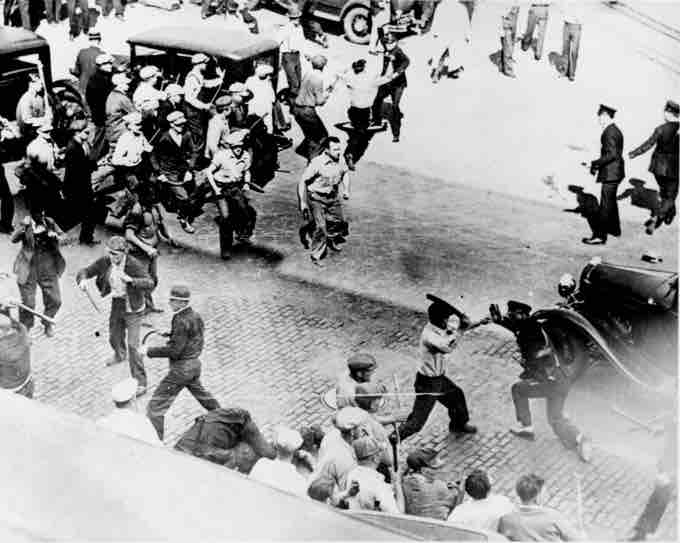What is a Strike?
A strike action, also called labor strike, is a work stoppage caused by the mass refusal of employees to work. A strike usually takes place in response to employee grievances.
Strikes became important during the Industrial Revolution when mass labor became important in factories and mines. In most countries, strike actions were quickly made illegal, as factory owners had far more political power than workers. Most western countries partially legalized striking in the late 19th or early 20th centuries.
Why Do Workers Strike?
Most strikes are undertaken by labor unions during collective bargaining. The object of collective bargaining is to obtain a contract (an agreement between the union and the company) which may include a no-strike clause or penalizes the union and/or the workers if they walk out while the contract is in force. The strike is typically reserved as a threat of last resort during negotiations between the company and the union.
Occasionally, workers decide to strike without the sanction of a labor union. This is either because the union refuses to endorse the tactic, or because the workers concerned are not unionized. Such strikes are often described as unofficial.
Strikes without formal union authorization are also known as wildcat strikes. In many countries, wildcat strikes do not enjoy the same legal protections as recognized union strikes, and may result in penalties for the union members who participate.
What Happens During A Strike?
- A strike may consist of workers refusing to attend work or picketing outside the workplace to prevent or dissuade people from working in their place or conducting business with their employer.
- Less frequently workers may occupy the workplace, but refuse either to do their jobs or to leave. This is known as a sit-down strike.
- A similar tactic is the work-in, where employees occupy the workplace but still continue work, often without pay. This tactic attempts to show they are still useful, or that worker self-management can be successful. This occurred with factory occupations in the Bienno Rossi strikes-the "two red years" of Italy from 1919-1920.
- Another unconventional tactic is work-to-rule, in which workers perform their tasks exactly as they are required but no better. For example, workers might follow all safety regulations in a way that it impedes their productivity. Such strikes may be a form of "partial strike" or "slowdown. "
What is a Strikebreaker?
A strikebreaker continues to work during strike action by trade unionists or acts as a temporary or permanent replacement worker hired to take the place of those on strike.
The act of working during a strike – whether by strikebreakers, management personnel, non-unionized employees or members of other unions not on strike – is known as "crossing the picket line," regardless of whether it involves actually physically crossing a line of picketing strikers. Crossing a picket line can result in passive and/or active retaliation against that working person.
What Methods do Employers use to Deal with Strikes?
Most strikes called by unions are somewhat predictable; they typically occur after the contract has expired.
- Strike preparation: Companies which produce products for sale will frequently increase inventories prior to a strike. Salaried employees may be called upon to take the place of strikers, which may entail advance training. If the company has multiple locations, personnel may be redeployed to meet the needs of reduced staff.
- Companies may also take out strike insurance prior to an anticipated strike, helping to offset the losses which the strike would cause.
- One of the weapons traditionally wielded by already-established unions is strike action. Some companies may decline entirely to negotiate with the union, and respond to the strike by hiring replacement workers. This may create a crisis situation for strikers — do they stick to their original plan and rely upon their solidarity, or is there a chance that the strike may be lost? How long will the strike last? Will strikers' jobs still be there if the strike fails? Are other strikers defecting from the strike? Companies that hire strikebreakers typically play upon these fears when they attempt to convince union members to abandon the strike and cross the union's picket line.
- Another counter to a strike is a lockout, the form of work stoppage in which an employer refuses to allow employees to work.
Unions faced with a strikebreaking situation may try to inhibit the use of strikebreakers by a variety of methods:
- establishing picket lines where the strikebreakers enter the workplace
- discouraging strike breakers from taking or keeping strikebreaking jobs
- raising the cost of hiring strikebreakers for the company
- employing public relations tactics

Teamsters clash with armed police in Minneapolis, 1934.
Members of the Teamsters union wielding pipes clash with armed police during a 1934 strike in Minneapolis.